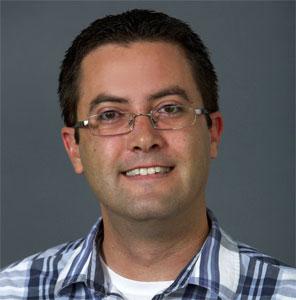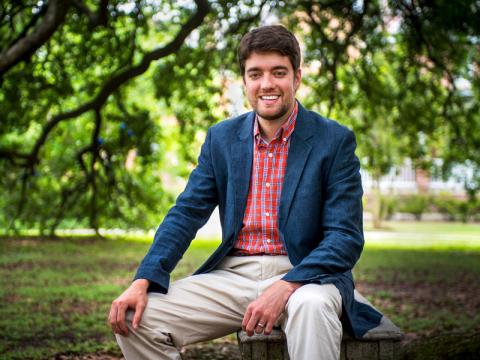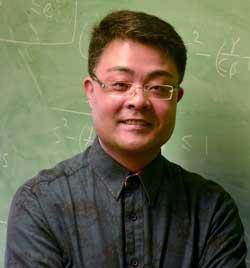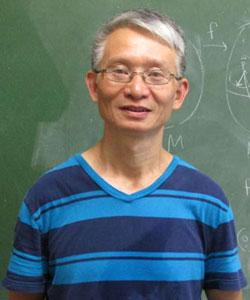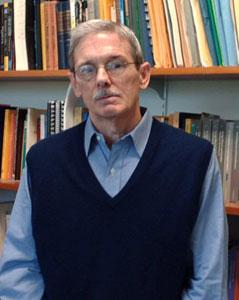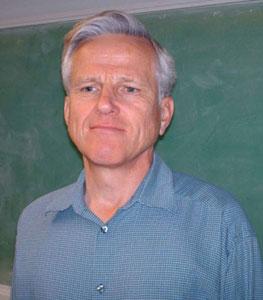Lev Kaplan, Ph.D.
Lev Kaplan, Ph.D.
Professor
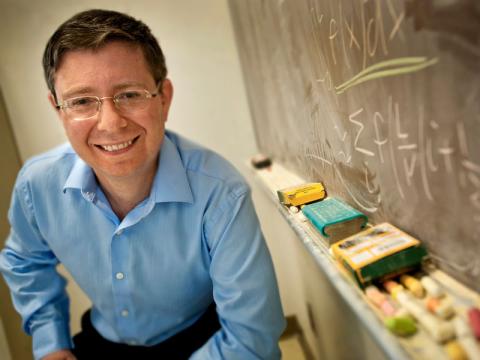
Education & Affiliations
Biography
Dr. Kaplan's research interests include Quantum Chaos and Quantum Information.
Awards
Weiss Presidential Fellowship for Undergraduate Education (2011)
Recent Publications
L. Ponzoni, G. L. Celardo, F. Borgonovi, L. Kaplan, and A. Kargol, “Focusing in Multiwell Potentials: Applications to Ion Channels,” Phys. Rev. E 87, 052137 (2013), arXiv:1209.0505.
G. L. Celardo, A. Biella, L. Kaplan, and F. Borgonovi, “Interplay of Superradiance and Disorder in the Anderson Model,” Fortschr. Phys. 61, 250 (2013), arXiv:1204.3325.
Basil S. Davis, L. Kaplan, and J. H. McGuire, “On Exchange of Orbital Angular Momentum Between Twisted Photons and Atomic Electrons,” J. Optics 15, 035403 (2013), arXiv:1206.6935.
Basil S. Davis and L. Kaplan, “Transverse Phase Variation of a Gaussian Beam,” J. Optics 15, 075706 (2013), arXiv:1206.7107.
A. Matthew Smith, D. B. Uskov, M. Fanto, L. H. Ying, and L. Kaplan, “Proposed Experiment in Two-Qubit Linear Optical Photonic Gates for Maximal Success Rates,” J. Phys. B 45, 185502 (2012), selected for IOPSelect, arXiv:1201.5798.
E. K. Abalo, K. A. Milton, and L. Kaplan, “Scalar Casimir Energies of Tetrahedra and Prisms,” J. Phys. A 45, 425401 (2012), arXiv:1202.0908.
L. H. Ying and L. Kaplan, “Systematic Study of Rogue Wave Probability Distributions in a Fourth-Order Nonlinear Schrödinger Equation,” J. Geophys. Res. 117, C08016 (2012), arXiv:1207.2130.
A. Matthew Smith, D. B. Uskov, M. Fanto, L. H. Ying, and L. Kaplan, “Theory and Experimental Requirements of Imperfect Two-Qubit Linear Optical Photonic Gates,” Proc. SPIE 8400, 840015 (2012).
A. Ziletti, F. Borgonovi, G. L. Celardo, F. M. Izrailev, L. Kaplan, and V. G. Zelevinsky, “Coherent Transport in Multi-Branch Circuits,” Phys. Rev. B 85, 052201 (2012), arXiv:1109.1575.
E. K. Abalo, K. A. Milton, and L. Kaplan, “Scalar Casimir Energies of Tetrahedra,” QFEXT 11 Conference Proceedings, Int. J. Mod. Phys. Conf. Ser. 14, 230 (2012).
A. Matthew Smith, D. B. Uskov, L. H. Ying, and L. Kaplan, “Imperfect Linear-Optical Photonic Gates with Number-Resolving Photodetection,” Phys. Rev. A 84, 032341 (2011), arXiv:1105.4211.
L. H. Ying, Z. Zhuang, E. J. Heller, and L. Kaplan, “Linear and Nonlinear Rogue Wave Statistics in the Presence of Random Currents,” invited article for Nonlinearity 24, R67 (2011), arXiv:1207.2162.
B. S. Davis and L. Kaplan, “Poynting Vector Flow in a Circular Circuit,” Am. J. Phys. 79, 1155 (2011), arXiv:1207.2173.
L. Kaplan and Y. Alhassid, “Dynamical Effects and Fluctuations of Interaction-Matrix Elements for a Ballistic Quantum Dot,” Phys. Rev. B 83, 205312 (2011), arXiv:0909.3295.
L. Kaplan, “Quantum Vacuum Energy in Graphs and Billiards,” Proceedings of Symmetries in Nature, Symposium in Memoriam Marcos Moshinsky, AIP Conference Proceedings 1323, 153-163, ed. by L. Benet, P. O. Hess, M. Torres, and K. B. Wolf (2010), arXiv:1101.0563.
E. K. Abalo, K. A. Milton, and L. Kaplan, “Casimir Energies of Cylinders: Universal Function,” Phys. Rev. D 82, 125007 (2010), arXiv:1008.4778.
G. L. Celardo, A. M. Smith, S. Sorathia, V. G. Zelevinsky, R. A. Senk'ov, and L. Kaplan, “Transport through Nanostructures with Asymmetric Coupling to the Leads,” Phys. Rev. B 82, 165437 (2010), arXiv:1007.5247.
A. M. Smith and L. Kaplan, “Integrating Random Matrix Theory Predictions with Short-Time Dynamical Effects in Chaotic Systems,” Phys. Rev. E 82, 016214 (2010), arXiv:1006.5733.
D. B. Uskov, A. M. Smith, and L. Kaplan, “Generic Two-Qubit Photonic Gates Implemented by Number-Resolving Photodetection,” Phys. Rev. A 81, 012303 (2010), arXiv:0908.2482.
R. Höhmann, U. Kuhl, H.-J. Stöckmann, L. Kaplan, and E. J. Heller, “Freak Waves in the Linear Regime: A Microwave Study,” Phys. Rev. Lett. 104, 093901 (2010), arXiv:0909.0847.
A. M. Smith and L. Kaplan, “Method to Modify Random Matrix Theory Using Short-Time Behavior in Chaotic Systems,” Phys. Rev. E 80, 035205(R) (Rapid Communication) (2009), arXiv:0907.5037.
G. L. Celardo and L. Kaplan, “Superradiance Transition in One-Dimensional Nanostructures: An Effective Non-Hermitian Hamiltonian Formalism,” Phys. Rev. B 79, 155108 (2009), arXiv:0901.0305.
S. A. Fulling, L. Kaplan, K. Kirsten, Z. H. Liu, and K. A. Milton, “Vacuum Stress and Closed Paths in Rectangles, Pistons, and Pistols,” J. Phys. A 42, 155402 (2009), arXiv:0806.2468.
E. J. Heller, L. Kaplan, and A. Dahlen, “Refraction of a Gaussian Seaway,” J. Geophys. Res. 113, C09023 (2008), arXiv:0801.0613.
L. Kaplan and Y. Alhassid, "Interaction Matrix Element Fluctuations in Ballistic Quantum Dots: Random Wave Model," Phys. Rev. B 78, 085305 (2008), arXiv:0802.2410.
E. J. Heller, L. Kaplan, and F. Pollmann, "Inflationary Dynamics for Matrix Eigenvalue Problems," Proc. Natl. Acad. Sci. USA 105, 7631 (2008), arXiv:0712.4093.
Courses
TIDES 1350: Mysteries of the Quantum World
PHYS/ENGP 3170/6170: Computational Physics and Engineering
PHYS/ENGP 3230/6230: Quantum Information Science and Engineering
PHYS 7060: Theoretical Mechanics
PHYS 7100: Statistical Mechanics
PHYS 7311: Quantum Field Theory
